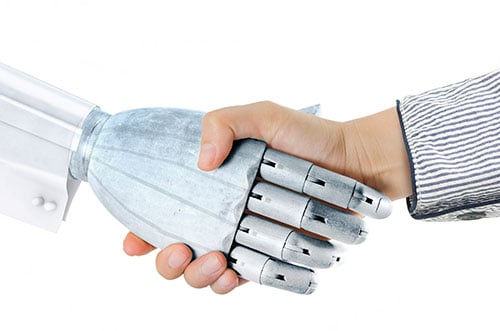
The University of NSW has developed a ‘social robot’ to interact with employees in the workplace

A new employee is set to join Fuji Xerox R&D Square in Japan.
Designed to improve employee experience in the workplace, the ‘social robot’ is part of a three-year collaboration between the UNSW Creative Robotics Lab and the Fuji Xerox Research Technology Group (RTG) in Japan.
The robot has been made to interact with employees in the workplace and perform administrative and organisational tasks. The idea is to allow workers to use their time to create, according to Roshan Thapliya, research senior manager of the Research and Technology Group at Fuji Xerox.
“If you look at an average office worker at the moment, almost 70-80% of their time they are not doing the work they should be doing,” said Dr Thapliya.
“They are looking for documents or for the right person to ask about a particular problem.
“We would like a special type of robot that would fit right into the workplace so that people will not be disturbed by its presence but at the same time help them with their tasks.”
The first phase of the project involved preliminary engineering tests at UNSW. In the next phase, the robot will be placed in real-life scenarios to test audience reactions, first at the National Museum of Emerging Science and Innovation in Tokyo then at the Fuji Xerox office.
The second phase will concentrate on developing technology that will monitor and enhance the employees' wellbeing and facilitate collaboration between colleagues.
Dr Thapliya and the Director of the Creative Robotics Lab at UNSW, Professor Mari Velonaki, say "synchronicity is the key to workplace cooperation", and the robot is designed to facilitate that.
Moreover, they believe that social robots can break down barriers between employees to encourage collaboration.
“If you are calm and able to synchronise with your team members then your productivity will improve, and this is what we are looking for," said Dr Thapliya.
"We are not looking for drones, we are looking for creators and innovators,”
Professor Velonaki added that with "synchronicity" they are looking at a balanced environment.
"Someone else wants to join a circle because it seems collaborative and the robot can facilitate that,” said Professor Velonaki.
Dr Thapliya added that the emotional wellbeing of people in the workplace is vital and that social robots can be of assistance with that.
“Our main goal is to make a companion for humans… I think one of the differentiators will be understanding the person’s emotional requirements and acting not in a physical way, but in a subtle way that facilitates positive arousal… we want to create a heartful robot,” Dr Thapliya said.
The pair are also adamant that social robots will not replace people in the workplace. Instead, they will allow workers to collaborate and be creative.
“We are not interested in building machines that will replace humans, we are interested in creating systems that enhance humans. It is to connect people. It sounds like an oxymoron asking a robot to connect people, but there can be less stigma attached when a physical agent connects people,” said Professor Velonaki.
Dr Thapliya said creativity is the one thing that humans will always be better at than machines, and creative work is what will be required over the next 20 to 30 years.
“What technology does is it disrupts this linear model into a different model and actually creates more jobs,” said Dr Thapliya.
Last year, MYOB's Future of Business Report: The Age of Change, found Australian businesses may not be prepared to face the total transformation of business coming in the next two decades.
MYOB's chief technical advisor and futurist, Simon Raik-Allen, said the key trends that business operators expect will alter their industry cover a broad range of technologies, from improvements in connectivity and cloud computing, to robotics and machine learning.
“Few local businesses see themselves as early adopters or fast followers of newly introduced innovations – most tend to wait until they are widely adopted, putting themselves behind the curve,” he said.
“They also see many barriers to innovation – from costs and red tape to a shortage of skilled staff – which will restrict how prepared businesses are to manage the technological changes we’ll see over the next decade.
“But in a world where a robot tractor can plough a field and repair a fence line, a robotic plumber can fix your toilet, a drone can deliver a coffee made by an automatic barista, AI can scan and approve a contract and a holographic projector can let you visit any place in the world, what place is there for a business that delivers any of these services today?”